Types And Uses Of Scaffolding Equipment
Jul 16, 2024Construction scaffolding is a temporary structure at a construction site that is put up to help workers and supplies in high-altitude construction projects. It provides a safe and reliable base for construction workers to perform some kind of construction, renovation and maintenance operations efficiently and in small places. It's not just used to build the facade, but also for interior remodeling, installing electrical fixtures or other projects that involve work in the air.
Fixed scaffolding
Mobile scaffolding
Suspended scaffolding
The pole , also known as the standard, is the vertical support part of the scaffolding, carrying the vertical load of the entire structure. The pole is usually made of steel pipe, and its main function is to support the weight of the entire scaffolding and the load of construction personnel and materials above. The height of the pole can be adjusted and connected according to construction needs to ensure the stability and safety of the scaffolding.
Poles are usually made of steel or aluminum, and if they are steel, they are either powder coated or galvanized. Poles come in a variety of sizes, with a standard outside diameter of 48.3 mm. The main difference between the two metal poles is the lighter weight of the aluminum tube.

The ledgers include large ledgers and small ledgers, which are important scaffolding components that connect the vertical poles and provide horizontal support. The large ledgers is installed horizontally between the vertical poles to strengthen the scaffolding structure; the small ledgers connects the vertical poles and the large ledgers to further enhance the stability of the scaffolding. The installation of the ledgerss needs to be ensured to be firm to prevent the structure from loosening.
The size of the ledgers is usually determined according to the design and requirements of the scaffolding system. The length of the standard ledgers usually corresponds to the width of the scaffolding board to ensure the stability and balance of the entire scaffolding structure.
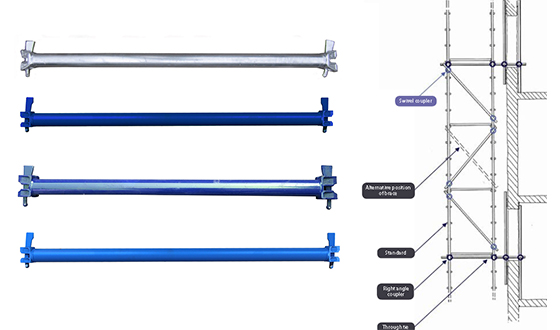
Diagonal braces are used to enhance the overall stability of the scaffolding and prevent it from tilting or collapsing during use. Diagonal braces are usually installed between the vertical poles and the horizontal poles at a certain angle to increase the scaffolding's ability to resist lateral forces by increasing the rigidity of the structure. Proper installation of diagonal braces can effectively disperse the load and increase the safety of the scaffolding.
· Internal diagonal brace : located on the inside of the scaffolding, connected between adjacent vertical poles and horizontal poles.
· External braces : Located on the outside of the scaffold, usually used to provide additional support and stability.
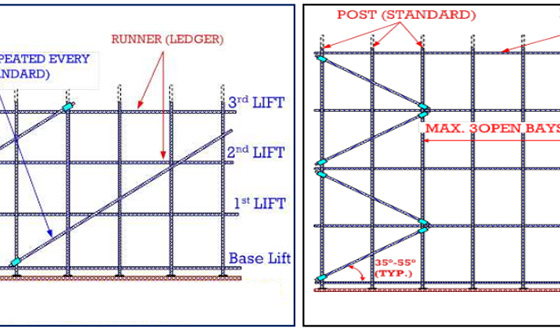
Scaffolding board is a platform for workers to walk and work on the scaffolding, usually made of wood or steel. Scaffolding should have sufficient strength and anti-slip properties to ensure the safety of workers when working at height. When installing scaffolding, make sure it is stable and firm, and check its status regularly to prevent breakage or displacement.
The size of the scaffolding board is usually determined by the design and requirements of the scaffolding system. The standard size is usually 2.5 meters long and 0.3 meters wide.
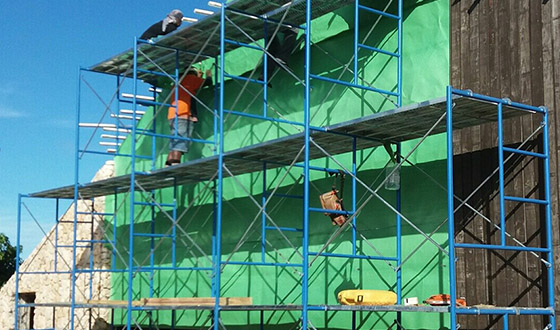
The base is an important scaffolding accessories, used to support and fix the scaffolding poles. The base is usually made of steel plates and placed on the ground to distribute the load of the poles; the base is generally adjustable to adjust the height and level of the scaffolding. Correct base setting is the key to ensure the stability and safety of the scaffolding.
Scaffolding bases are suitable for ring lock scaffolding, Kwikstage scaffolding, cup lock scaffolding, scaffolding frame, tube and clamp scaffolding systems.
The uprights or standards should be fitted to a steel base and this base should be a minimum of 150mm x 150mm x 6mm. This steel base should be used in all ground and concrete floor conditions and be a part of the tower, it should not be an optional extra.
Couplers and Clamps are actually scaffolding material used to assemble fixed scaffolding. Fixed scaffolding is a type of scaffolding that is assembled by connecting steel pipes with couplers.
It includes two components: load-bearing and non-load-bearing:
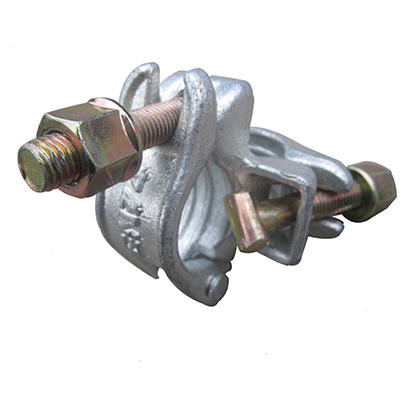
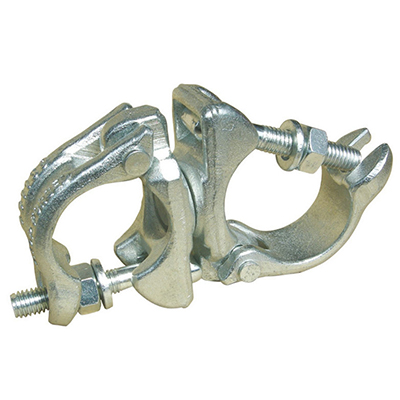
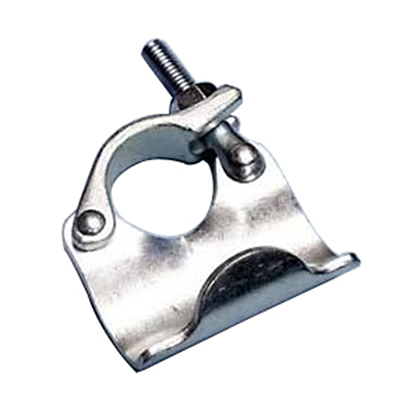



Protective nets and safety nets are an important safety measure to protect workers and ensure that tools and materials do not fall from high places. At the same time, they can prevent accidents from happening, protect workers an isolate them. Protective nets are usually installed around the scaffolding to protect and isolate the workers, while the safety net is installed under the scaffolding in case a worker falls onto it. Proper installation and use of safety nets and protective nets can effectively reduce construction risks.
Ladders and walkways, which are accessed and used by employees, are means by which a vertical change in height might be negotiated. By having ladders and walkways in place, employees can move onto and off the scaffolding, while also creating a fluid stream of people moving throughout the space. A ladder is usually installed on the side of the scaffold and walkways are created using scaffold boards, meaning there is the possibility of ladders or lay boards being fixed to gain access to more than one level. The design and installation of ladders and walkways should meet safety standards to prevent slip and fall accidents.
The safety buckles and safety belts are personal protective equipment that must be worn by workers when working at height to prevent falling. The safety buckle is typically linked to the fixed point of the scaffold, and the safety belt is tied around the waist and legs of the workers. The most important thing to remember when wearing and using the safety buckle and safety belt is to ensure they are intact, worn correctly and used correctly to protect the life of the workers.
Selecting the proper construction scaffolding is very important for the safety and efficiency of construction project. Here are some key points to consider when selecting the construction scaffolding.
Maintenance of scaffolding equipment is essential to ensure its long-term safe use. Here are some key steps for daily maintenance:
Scaffolding is a significant part of the building process. If scaffolding is used, selected and maintained correctly, construction efficiency is promoted and the safety of workers can be maximized. By understanding scaffolding accessories’s fundamental principles, primary components, safety use guidelines, and maintenance requirements, construction organizations can comprehensively take measures to ensure safety and prevent accidents, leading to the successful progression of construction projects.
What Does A Scaffolder Need?
What Tools Are Used In Scaffolding?
Is Scaffolding An Equipment?
How To Become A Scaffolder --- GOCONSTRUCT
A Guide To Scaffold Use In The Construction Industry --- OSHA
Scaffolding & Construction Updates --- SIMIAN